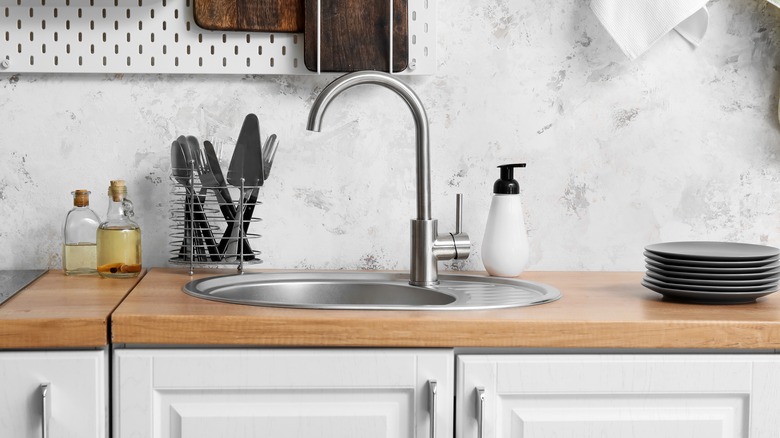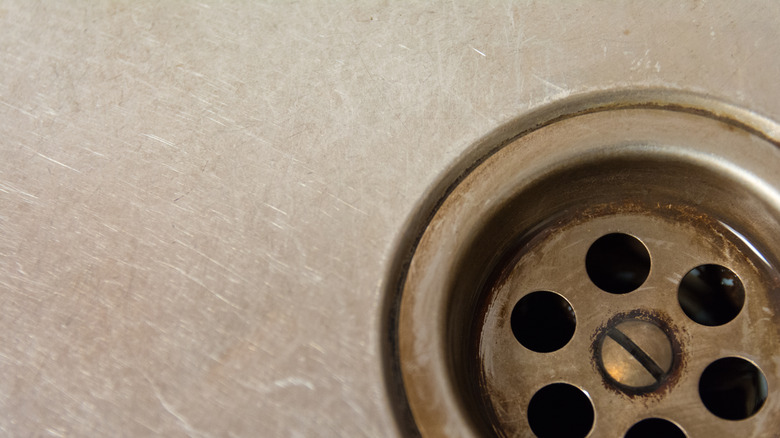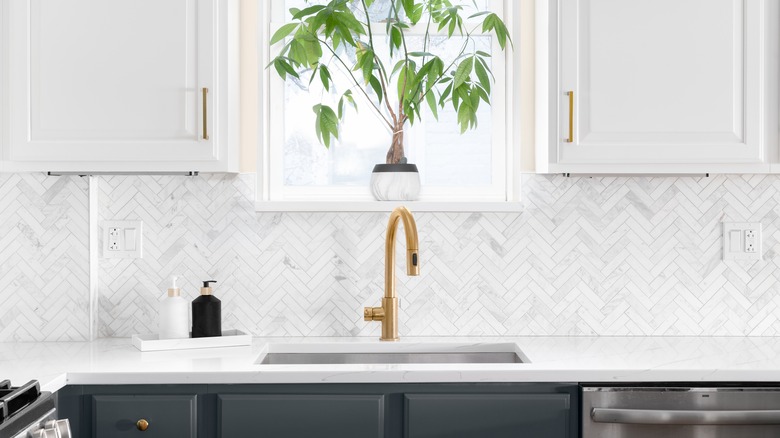The Hidden Downsides Of Stainless Steel Sinks
Deciding whether to install a porcelain or stainless steel sink in your kitchen is about more than just your personal tastes in interior design. Stainless steel tends to look more sleek and modern, but there are many other reasons why someone may choose to have one in their kitchen. For example, stainless steel is known to be more durable than porcelain, so it won't easily stain, chip, or crack under pressure or high heat. Stainless steel sinks are also more lightweight and can be easily installed in a trendy under-mount position.
However, not all that glitters is gold when it comes to stainless steel. Believe it or not, there are some hidden downsides to this increasingly popular kitchen sink material. In fact, stainless steel sinks can be quite pricey for a good-quality gauge, they're not entirely damage-proof, and they could even detract from the overall appeal of your kitchen. Here are the practical and aesthetic downsides you need to know about stainless steel sinks before you decide to buy one.
Practical downsides of a stainless steel sink
A stainless steel sink generally costs between $225 and $550, with some high-end industrial sinks costing over $4,000. At the lowest, you can expect to pay at least $50 for a stainless steel sink of lesser quality. Regardless of what you paid for it, your new sink may look gorgeous and shiny right out of the packaging, but it's only a matter of time until it loses its luster.
Stainless steel sinks are generally thought of as more durable than porcelain, but they aren't totally bulletproof. In fact, the steel is actually quite easy to scuff and scratch when it comes into contact with silverware, sharp knives, or tough scouring pads like steel wool. A stainless steel buffing compound or scratch removal kit can help to minimize the appearance of scratches, but sometimes these can cause more damage than they fix when it comes to sinks, which have a protective coating. Corrosive disinfectants like bleach can also destroy the sink's protective surface, making the stainless steel less "stainless" and even leading to rust buildup — especially in and around those scratches. Enough force, such as dropping a heavy pot, can also cause the sink to dent or warp, and it's extremely difficult to bend the steel back into shape. Denting is usually more common with thinner gauge steel, so investing in a thicker, more expensive sink (at least 18 gauge) will help it last longer.
Aesthetic downsides of a stainless steel sink
Besides the practical pros and cons, there are some considerations you need to make about your kitchen's aesthetic. Firstly, stainless steel sinks can produce a lot of noise. In a home with upstairs bedrooms, this may not matter too much, but nobody likes trying to nap while someone is banging dishes down the hall. Plus, when you're finished washing those dishes, you'll need to clean and dry the sink, or else water spots will form all over the sink's shiny surface.
Even if you promise to wash dishes quietly and always wipe up water spots, a stainless steel sink may not appeal to everyone's taste in interior design. Stainless steel sinks tend to have a modern, utilitarian look, which looks lovely in a modern, sterile kitchen but can seem out of place in a more traditional or cottage-like home. A white porcelain sink lends a more warm and inviting vibe to these kitchens.
Love the look of gold, brass, or rubbed bronze hardware? Stainless steel sinks come in different metal finishes like satin, brushed, or mirror finishes, but they are all generally the same metallic gray color. This limits your color options for faucets and cabinet hardware in your kitchen unless you're okay with mismatched metal finishes in one space.


